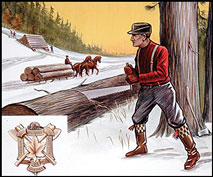Article contents
Timber for the trenches: a new perspective on archaeological wood from First World War trenches in Flanders Fields
Published online by Cambridge University Press: 11 December 2018
Abstract

During the First World War (1914–1918), the construction and maintenance of the Western Front in North-west Europe required huge quantities of timber. Although archaeological investigations regularly uncover well-preserved wooden structures and objects, studies of the timber's provenance are rare. The authors combine archival research with wood-species identification and tree-ring analysis of a large assemblage of wooden objects excavated from former trenches on the Western Front. The results show that most objects and structures were made using fast-growing European species, with evidence for the small-scale but continuous importation of North American timber.
- Type
- Research
- Information
- Copyright
- Copyright © Antiquity Publications Ltd, 2018
References
- 9
- Cited by




